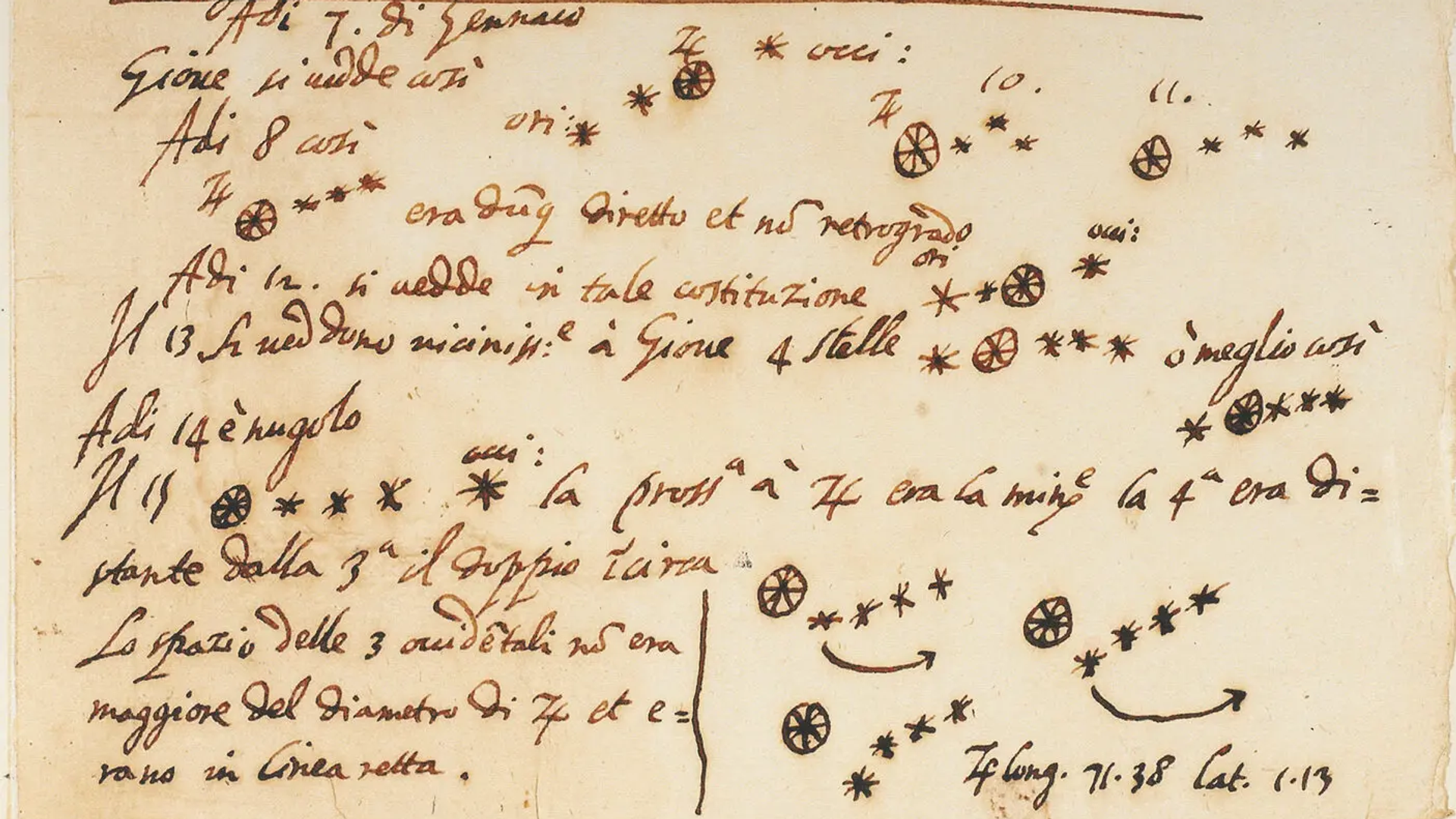https://sputnikglobe.com/20220824/manuscript-allegedly-written-by-galileo-galilei-exposed-as-20th-century-forgery-1099950384.html
Manuscript Allegedly Written By Galileo Galilei Exposed as 20th Century Forgery
Manuscript Allegedly Written By Galileo Galilei Exposed as 20th Century Forgery
Sputnik International
The manuscript was apparently written on a paper that was produced long after the death of the document’s purported author. 24.08.2022, Sputnik International
2022-08-24T18:13+0000
2022-08-24T18:13+0000
2022-08-24T18:13+0000
science & tech
galileo galilei
manuscript
forgery
https://cdn1.img.sputnikglobe.com/img/07e6/08/18/1099947300_0:1222:1406:2013_1920x0_80_0_0_cf1eaf3123100956845c53477546b90c.png
The University of Michigan Library has announced that a manuscript supposedly written by Galileo himself, which has been a prominent part of their collection for nearly a century, turned out to be a forgery.The top half of the one-page document features “the draft of a letter accompanying Galileo's official presentation of a recently built telescope to the Doge of Venice on August 24, 1609,” while its bottom half contains “draft notes recording Galileo's telescopic observations of the moons of Jupiter from January 7–15, 1610.”The manuscript came into the library’s possession after the Trustees of the McGregor Fund bequeathed the manuscript to the University of Michigan in 1938 following the death of Tracy McGregor, who had bought it at an auction held by American Art Anderson Galleries a few years earlier.However, in May 2022, Nick Wilding, professor of history at Georgia State University, contacted the University of Michigan Library’s curator Pablo Alvarez via email and expressed doubts about the manuscript’s authenticity.During their investigation, the library concluded that the manuscript was apparently written on paper produced sometime after year 1770, long after Galileo’s death in 1642.At the auction in 1934, where Terry bought the manuscript, the document was accompanied by a note from the Archbishop Maffi authenticating it by comparing it with two other manuscripts of Galileo’s in Pisa. However, both of the purported documents also turned out to be forgeries by Nicotra, the library points out.
Sputnik International
feedback@sputniknews.com
+74956456601
MIA „Rossiya Segodnya“
2022
News
en_EN
Sputnik International
feedback@sputniknews.com
+74956456601
MIA „Rossiya Segodnya“
Sputnik International
feedback@sputniknews.com
+74956456601
MIA „Rossiya Segodnya“
science & tech, galileo galilei, manuscript, forgery
science & tech, galileo galilei, manuscript, forgery
Manuscript Allegedly Written By Galileo Galilei Exposed as 20th Century Forgery
The manuscript was apparently written on a paper that was produced long after the death of the document’s purported author.
The University of Michigan Library has announced that a manuscript supposedly written by Galileo himself, which has been a prominent part of their collection for nearly a century, turned out to be a forgery.
The top half of the one-page document features “the draft of a letter accompanying Galileo's official presentation of a recently built telescope to the Doge of Venice on August 24, 1609,” while its bottom half contains “draft notes recording Galileo's telescopic observations of the moons of Jupiter from January 7–15, 1610.”
The manuscript came into the library’s possession after the Trustees of the McGregor Fund bequeathed the manuscript to the University of Michigan in 1938 following the death of Tracy McGregor, who had bought it at an auction held by American Art Anderson Galleries a few years earlier.
However, in May 2022, Nick Wilding, professor of history at Georgia State University, contacted the University of Michigan Library’s curator Pablo Alvarez via email and expressed doubts about the manuscript’s authenticity.
“Wilding concluded that our Galileo manuscript is a 20th-century fake executed by the well-known forger Tobia Nicotra,” the library said in a statement posted on their website. “After our own experts studied his most compelling evidence — about the paper and provenance — and reexamined the manuscript, we agreed with his conclusion.”
During their investigation, the library concluded that the manuscript was apparently written on paper produced sometime after year 1770, long after Galileo’s death in 1642.
At the auction in 1934, where Terry bought the manuscript, the document was accompanied by a note from the Archbishop Maffi authenticating it by comparing it with two other manuscripts of Galileo’s in Pisa. However, both of the purported documents also turned out to be forgeries by Nicotra, the library points out.



